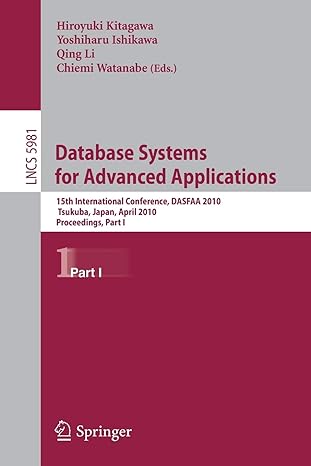Question
write a Matlab function file to solve system Ax=b by using the output of the function lufac2a your function should have inputs f=matrix return from
write a Matlab function file to solve system Ax=b by using the output of the function lufac2a your function should have inputs f=matrix return from lufac2a, piv=array return by lufac2a and b=right hand side of your system.the only output for your system should be x
guideline
1.use the column access for the matrix entries
2. do not create any other matrix in your function-get your data directly from the matrix passed into your function
3.do not use Matlab command designed for solving system
function file LUFAC2A GIVEN BELOW
function [f, rp, flag] = lufac2a(a)
% The purpose of this function is to apply Gaussian elimination with
% partial pivoting to the input matrix a . (This follows the LINPACK
% algorithm except uses elementary Gaussian transformations from Matrix
% Computations). This function returns:
%
% f - matrix containing the information about the L and U matrices in the
% factorization PA=LU
%
% rp - array containing information about the row interchanges used in the
% elimination process
%
% flag - error flag (set to 0 if a is invertible, and set to k>0 if a
% nonzero pivot could not be found for column k)
%
% The calling sequence is [f, rp, flag] = lufac2(a)
[m,n] = size(a);
if m ~= n
disp('The matrix must be a square matrix.')
return
end
f = a;
rp = zeros(n,1);
for j=1:n-1
[mx,p] = max(abs(f(j:n,j)));
if mx == 0
flag = j;
return
end
p = p + j - 1;
rp(j) = p;
if p~=j
temp = f(j,j:n);
f(j,j:n) = f(p,j:n);
f(p,j:n) = temp;
end
i=(j+1):n;
f(i,j) = f(i,j)/f(j,j);
f(i,i) = f(i,i) - f(i,j)*f(j,i);
end
if f(n,n)==0
flag = n;
else
flag = 0;
end
return
Step by Step Solution
There are 3 Steps involved in it
Step: 1

Get Instant Access to Expert-Tailored Solutions
See step-by-step solutions with expert insights and AI powered tools for academic success
Step: 2

Step: 3

Ace Your Homework with AI
Get the answers you need in no time with our AI-driven, step-by-step assistance
Get Started


